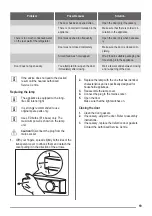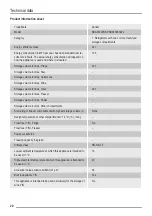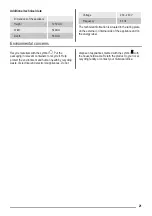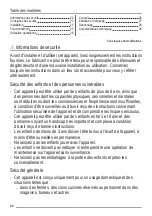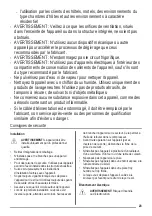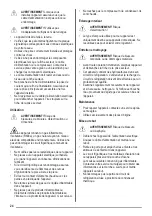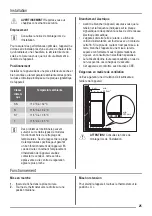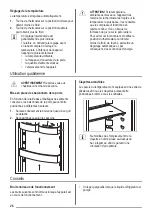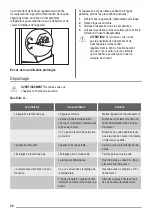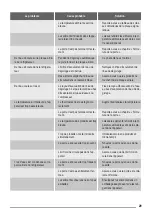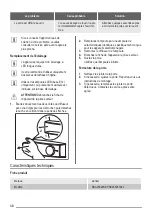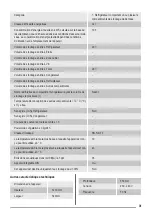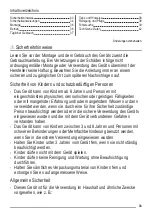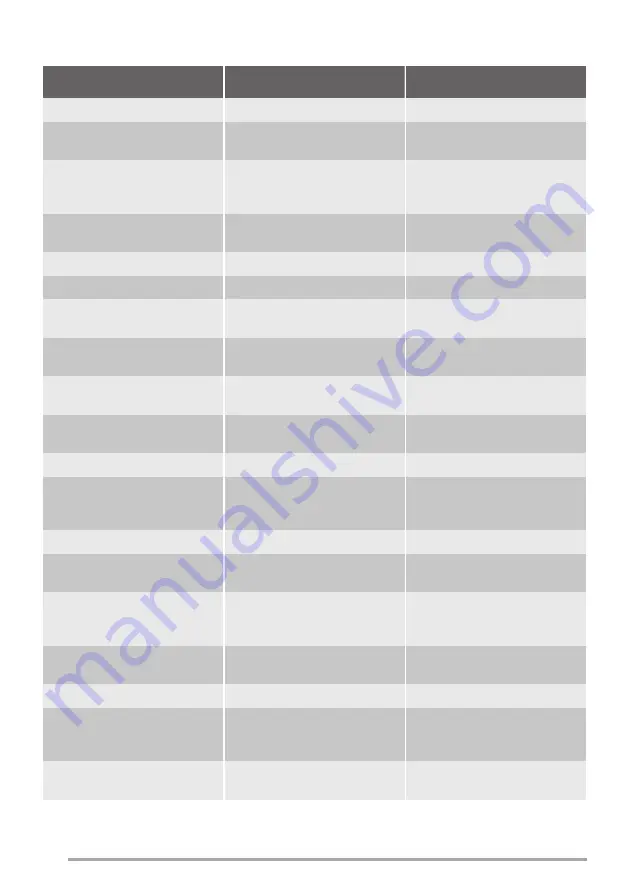
What to do if...
Problem
Possible cause
Solution
The appliance does not operate.
The appliance is switched off.
Switch on the appliance.
The mains plug is not connected to
the mains socket correctly.
Connect the mains plug to the
mains socket correctly.
There is no voltage in the mains
socket.
Connect a different electrical appli-
ance to the mains socket. Contact a
qualified electrician.
The appliance is noisy.
The appliance is not supported
properly.
Check if the appliance stands sta-
ble.
The lamp does not work.
The lamp is in stand-by.
Close and open the door.
The lamp is defective.
Refer to "Replacing the lamp".
The compressor operates continual-
ly.
Temperature is set incorrectly.
Refer to "Operation" chapter.
Many food products to be frozen
were put in at the same time.
Wait a few hours and then check
the temperature again.
The room temperature is too high.
Refer to climate class chart on the
rating plate.
Food products placed in the appli-
ance were too warm.
Allow food products to cool to room
temperature before storing.
The door is not closed correctly.
Refer to "Closing the door".
Water flows on the rear plate of the
refrigerator.
During the automatic defrosting
process, frost melts on the rear
plate.
This is correct.
Water flows into the refrigerator.
The water outlet is clogged.
Clean the water outlet.
Food products prevent that water
flows into the water collector.
Make sure that food products do not
touch the rear plate.
Water flows on the floor.
The melting water outlet is not con-
nected to the evaporative tray
above the compressor.
Attach the melting water outlet to
the evaporative tray.
The temperature in the appliance is
too low/too high.
The temperature regulator is not set
correctly.
Set a higher/lower temperature.
The door is not closed correctly.
Refer to "Closing the door".
The food products' temperature is
too high.
Let the food products temperature
decrease to room temperature be-
fore storage.
Many food products are stored at
the same time.
Store less food products at the
same time.
18
















